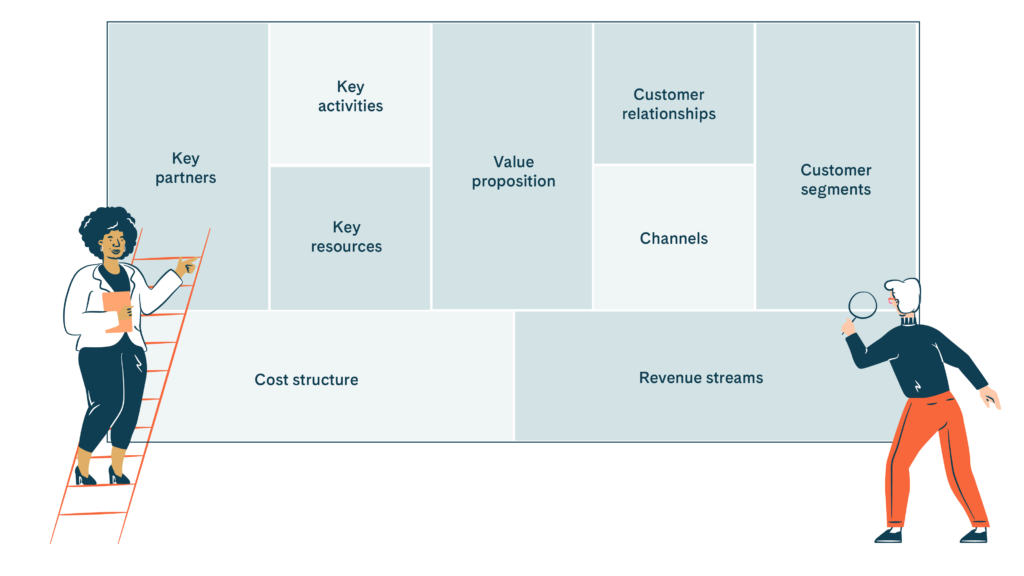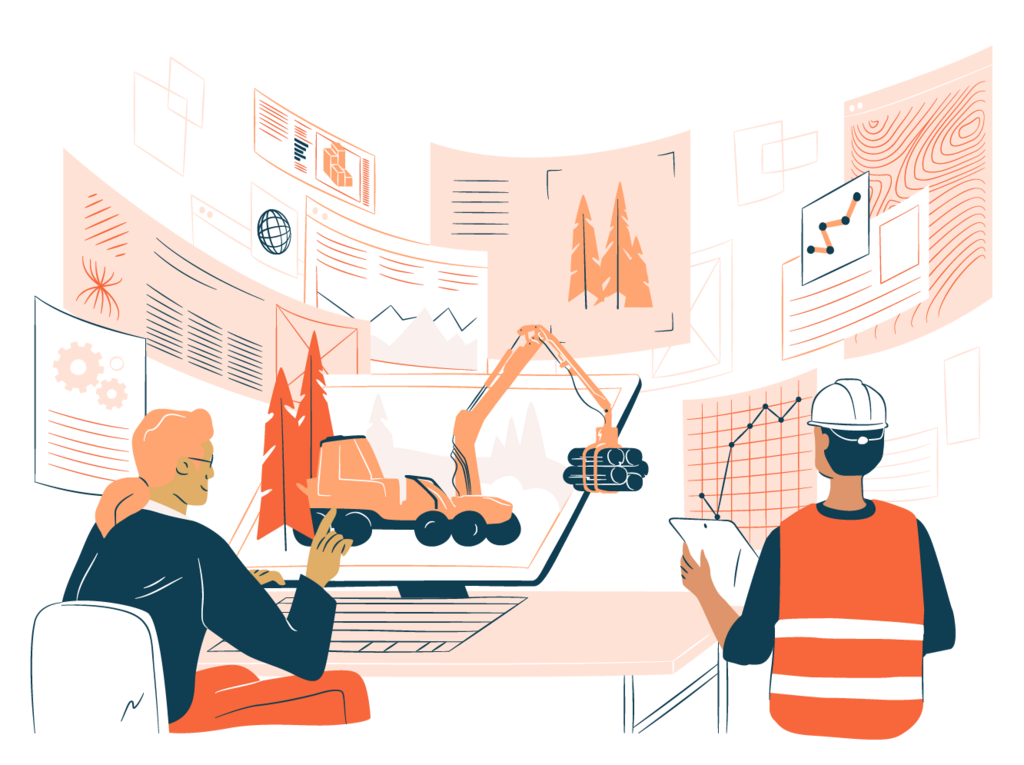A business model is known as a plan of how to execute an organization’s strategy. It can also be a summary of an organization’s business logic. Understanding the target domain is often required in order to model a business, for example, to gain a common understanding where the participants are a cross-functional team. To model these plans or summaries there are many tools, templates or frameworks available. In many cases, they use graphics to create a more understandable way to ensure that different perspectives are considered.
One of these templates which is easy to access is called the Business Model Canvas (BMC). An objective of the BMC is to create a commonly known way to clearly picture the ontology around the target domain. The BMC offers you pre-defined building blocks to divide your business domain or a single product/service – it works in a very scalable way because it fits both small and larger target domains. The BMC consists of nine building blocks which contain points of view from a value proposition, customer thinking, business infrastructure, and economics.

- The Value proposition building block is in the middle of the canvas. The value proposition defines the value or benefits customers get from using the organization’s products or services. For example, the service’s value proposition is to provide a faster and reliable connection between users.
- The Customer segments building block defines the customer groups for whom value will be produced. Customer segments can be sorted with different criteria, for example, according to age, county or industry.
- Customer relationships answers questions such as: what kind of relationships the organization has with different customer segments and how are they maintained. For example, how to create relationships with new customers, how to maintain existing customer-relationship or how to develop relationships with potential customers in the future.
- The Channels building block represents all the defined ways to reach customers or how the value propositions are distributed for customers. For example, an item bought from an online shop will be delivered via the post office, but a local store can sell the item locally.
- The Key resources building block defines all the resources required to produce and provide a value proposition. Resources can be divided for example according to the material (human, IT-infrastructure) and immaterial (patents, brand) resources.
- The Key activities building block answers the question: what are the main tasks or functions to deliver the value proposition. For example, activities can be divided according to manufacturing lines, services, or problems to be solved.
- The Key partners building block defines the most important stakeholders to complete all the necessary key activities.
- The Revenue streams building block defines the price for the value proposition. Different types of prices can be defined according to the customer segment.
- The Cost structure defines all the costs of the activities to produce and achieve the value proposition. For example, these can be costs of marketing, distributing and manufacturing. Cost structures can be sorted with fixed and variable costs.
One developed version of the BMC is called Service Logic Business Model Canvas, which especially points out customer thinking in these building blocks. For example, the value proposition considers what are the problems that customers are about to solve with a product or a service. Or what are the specific features that specific customer segments are looking for from the value proposition.
Towards a common understanding
Designing with graphical tools helps to understand the target domain from a different starting point. For instance, project members from different sectors might see the result in a very different way. The BMC-template offers a fast and effective way to begin brainstorming and especially to collect and compare ideas. All you need is a printed BMC-template and lots of Post-it notes. Collecting something concrete on a wall makes it possible to begin discussions with each other and promote the business model to the next level.
Finally, a couple of tips for effective teamwork with the BMC:
- By using different sizes and different colours of post-it notes you can highlight or easily split ideas into groups
- You may use multiple notes to write down words or paint pictures: tell a story while placing them onto the canvas (good stories are remembered for a long time)
- Be open-minded while having conversations about ideas – it’s dangerous to fall in love with your own ideas.
- It might be necessary to go through multiple rounds before getting a satisfying solution. It’s important to evaluate iteratively which ideas work better and which ones do not.
- It might be a good idea to split a larger group of participants into smaller groups and compare their outputs – finally collect the best ideas together.
Downloadable BMC-template:
http://www.businessmodelgeneration.com/downloads/business_model_canvas_poster.pdf
Example of using Service Logic Business Model Canvas:
https://pdfs.semanticscholar.org/8be1/75561b64ad8172cc7d5a0859da9c9460bda8.pdf
Sources:
Business Model Generation: A Handbook For Visionaries, Game Changers, And Challengers (2010) http://businessmodelgeneration.com/book?_ga=1.248258951.1869965398.1467892617
Osterwalder, Alexander et al. “The business model ontology: A proposition in a design science approach.” (2004). http://www.hec.unil.ch/aosterwa/PhD/Osterwalder_PhD_BM_Ontology.pdf



